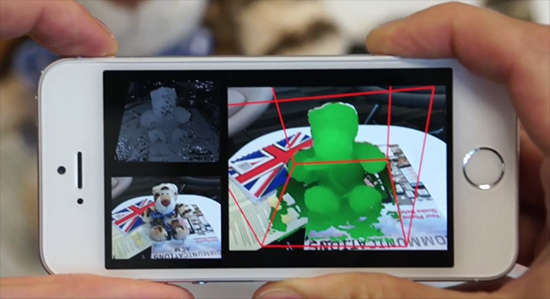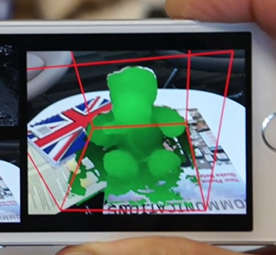| MobileFusion - Microsoft Turns Any Phone Into 3D Scanner |
| Written by David Conrad | |||
| Sunday, 30 August 2015 | |||
|
We were all very excited when the Kinect first hit the scene and 3D scanners of all sorts have played a role in some unbelievable projects ever since. Now Microsoft has an app that can turn any mobile phone into a 3D scanner without any additional hardware. MobileFusion is another product of Microsoft's amazing Research Group. It stems from the KinectFusion project that allows a Kinect to be used to scan a room and convert it together with all the objects it contains into a 3D model. The researchers responsible wondered if it was possible to do something similar with just a plain old video camera rather than a depth field camera and the answer is yes. MobileFusion should work on any phone and it not only doesn't need extra hardware it doesn't even need the help of a server for the number crunching, making this a true pocket 3D scanner that can capture 3D models out in the field.
Google is working on a handheld 3D scanner built into a phone (Project Tango), but it has am inbuilt depth camera. Intel is trying to create hardware that is cheap enough for a depth camera to be built into almost any device, but all of this might be a waste of effort if sufficiently good results can be achieved using just a video camera as found in almost any phone. How does this work? Indeed, how is it possible to extract 3D depth data from a 2D without a stereoscopic camera pair? The answers is that, as the user moves the camera around the object being scanned, the software can extract the depth from the video stream. As the camera moves, different parts of the object appear to move by different amounts according to how far they are away. The analysis consists of two steps. First the changes in the image are used to infer the camara's pose, i.e. where it is pointing in relation to the object. Then this is used to extract depth information from the video stream and build a 3D surface representation. As the camera shifts its point of view, new 3D information is deduced and this is added to the model to extend it. Thus the 3D model is built up as the user scans the object and adds parts that weren't visible in the first scans. The whole thing happens in an interactive way, allowing the user to scan some more to improve the model. Watch the video to see this in action:
It is not difficult to see having a 3D capture system in everyone's pocket could be useful. The research team suggests that it could be used to post 3D images of items for sale or to duplicate something using a 3D printer. Clearly it could also be used for robot vision or any number of similar systems, but its real value is in providing a 3D scanner for occasional use. The really sad part is that while the research paper is to be published in October, and the research team are working on versions for Windows Phone, Android and iOS, they have no firm plans to make MobileFusion available as an app. Why not?
More InformationMobileFusion: Research project turns regular mobile phone into 3D scanner Related ArticlesMicrosoft Research Shows How To Turn Any Camera Into A Depth Camera Project Tango Tablet Hardware And SDK Announced Kinect Fusion Coming to the SDK KinectFusion - instant 3D models Kintinuous - Kinect Creates Full 3D Models Open Souce KinectFusion - Instant Interactive 3D Models To be informed about new articles on I Programmer, install the I Programmer Toolbar, subscribe to the RSS feed, follow us on, Twitter, Facebook, Google+ or Linkedin, or sign up for our weekly newsletter.
Comments
or email your comment to: comments@i-programmer.info |
|||
| Last Updated ( Sunday, 30 August 2015 ) |



